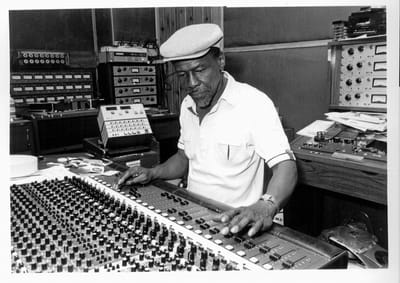history tape echo



Before the invention of audio delay technology, music with a delayed echo had to be recorded in a naturally echoing space, often an inconvenience for musicians and engineers. The popularity of an easy-to-implement real-time echo effect led to the production of systems that offer an all-in-one effect unit that can be adjusted to produce echoes of any interval or amplitude. The presence of multiple "taps" (display heads) made it possible to have delays at different rhythmic intervals; this provided musicians with an additional means of expression for natural periodic echoes. Tape based.
Many delay processors based on analogue tape recording, such as Eukson (1952) from Ray Butts, Echoplex from Mike Battle (1959) or Roland Space Echo (1973), used magnetic tape as their recording and playback media. Electric motors guided a tape loop through a device with a variety of mechanisms that can change the parameters of the effect. In the case of the popular Echoplex EP-2, the playhead was fixed, while a combined record and erase head was mounted on a slide, adjusting the delay time of the echo by changing the distance between the record and playhead. In the Space Echo all heads are fixed, but the speed of the tape can be adjusted, which changes the delay time. However, thin magnetic tape was not entirely suitable for continuous use, so the tape loop had to be replaced from time to time to maintain the audio resistance of the processed sounds.
Various designs have been made; the Ecco-Fonic from 1959 had a rotating head, the Binson Echorec used magnetic recording discs. Many were temperamental, such as the Vox Echomatic. The most successful of the early machines was the 1959 Echoplex from Mike Battle, "whose sounds are still being experimented with today"
Sometimes equipped with vacuum tube-based electronics, remaining analogue delay units are sought by modern musicians who want to use some of the timbres that are possible with this technology.
Many delay processors based on analogue tape recording, such as Eukson (1952) from Ray Butts, Echoplex from Mike Battle (1959) or Roland Space Echo (1973), used magnetic tape as their recording and playback media. Electric motors guided a tape loop through a device with a variety of mechanisms that can change the parameters of the effect. In the case of the popular Echoplex EP-2, the playhead was fixed, while a combined record and erase head was mounted on a slide, adjusting the delay time of the echo by changing the distance between the record and playhead. In the Space Echo all heads are fixed, but the speed of the tape can be adjusted, which changes the delay time. However, thin magnetic tape was not entirely suitable for continuous use, so the tape loop had to be replaced from time to time to maintain the audio resistance of the processed sounds.
Various designs have been made; the Ecco-Fonic from 1959 had a rotating head, the Binson Echorec used magnetic recording discs. Many were temperamental, such as the Vox Echomatic. The most successful of the early machines was the 1959 Echoplex from Mike Battle, "whose sounds are still being experimented with today"
Sometimes equipped with vacuum tube-based electronics, remaining analogue delay units are sought by modern musicians who want to use some of the timbres that are possible with this technology.


